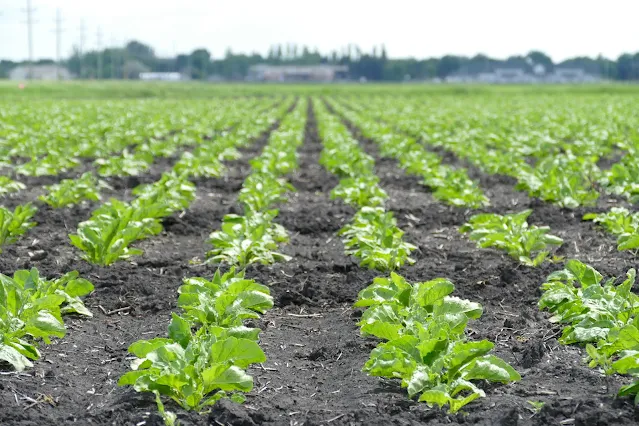
By: Dan Kaiser, Extension nutrient management specialist
Applying urea fertilizer in the fall is a popular practice for Minnesota sugarbeet growers to provide nitrogen (N) to the following year’s crop. However, recent research for corn in Minnesota shows a significant yield hit for fall-applied urea compared to spring application. Could the same be true for sugarbeet?
That’s the focus of a three-year study funded by the Sugarbeet Research and Education Board of Minnesota and North Dakota. We established two trials, one in the northern sugarbeet growing region of Minnesota (Crookston) and one in the state’s southern sugarbeet growing region (Hector). We’re looking at sugarbeet root yield and quality responses to various rates and sources of urea applied in late fall versus pre-plant in the spring. The goal of this study is to evaluate the efficiency of fall urea application and to see if any commercial inhibitors or polymer-coated urea blends differ in the amount of N supplied to the crop based on application timing.
One interesting finding from our recent sugarbeet research has been the impact of spring-applied urea on sugarbeet emergence. Sugarbeet emergence has been evaluated on N trials the past three growing seasons and has shown a clear reduction in emergence with increasing rates of spring-applied urea. While emergence was reduced, root yield was maximized despite decreased emergence.
2021 results
Last year was the first year of the three-year study. Data from 2021 followed the same trend as previous years, with a 25% reduction in emergence with 200 pounds of spring-applied N at both locations. Yield was not affected by N application at the northern field location and 90 pounds of N applied as urea maximized yield at the southern location (the applied N does not include 40 pounds of residual nitrate-N in a four-foot soil sample). The reduction in emergence was greater with spring application and there was little to no effect of fall-applied urea on emergence. Since fall application timing did not impact the amount of N needed for the southern location, there was again no relationship between the reduction in emergence and root yield or quality.Figure 1. Effect of nitrogen applied as fall or spring urea (data averaged for both timings) on sugarbeet emergence at two Minnesota locations during the 2021 growing season
The source comparisons were made at suboptimal rates of N and did not conclusively show a clear difference among the different inhibitors and other urea products. Delaying the conversion of urea to ammonium and nitrate could reduce the risk for stand loss, but if yield continues to not be impacted by stand reductions of up to 25% then there is no cost advantage to pay for an inhibitor or polymer-coated urea blend for sugarbeet production.
More data is needed to develop general recommendations about the best timing and source of urea for sugar beet production. For now, the best advice for growers is to follow our current sugarbeet fertilizer guidelines.
I would like to thank the Sugarbeet Research and Education Board of Minnesota and North Dakota for funding this research. I would also like to thank the research teams from the Southern Minnesota Beet Sugar Cooperative and the Northwest Research and Outreach Center for their help on this project.
---
For the latest nutrient management information, subscribe to Minnesota Crop News email alerts, like UMN Extension Nutrient Management on Facebook, follow us on Twitter, and visit our website.
Support for Minnesota Crop News nutrient management blog posts is provided in part by the Agricultural Fertilizer Research & Education Council (AFREC).
More data is needed to develop general recommendations about the best timing and source of urea for sugar beet production. For now, the best advice for growers is to follow our current sugarbeet fertilizer guidelines.
I would like to thank the Sugarbeet Research and Education Board of Minnesota and North Dakota for funding this research. I would also like to thank the research teams from the Southern Minnesota Beet Sugar Cooperative and the Northwest Research and Outreach Center for their help on this project.
---
For the latest nutrient management information, subscribe to Minnesota Crop News email alerts, like UMN Extension Nutrient Management on Facebook, follow us on Twitter, and visit our website.
Support for Minnesota Crop News nutrient management blog posts is provided in part by the Agricultural Fertilizer Research & Education Council (AFREC).

Comments
Post a Comment